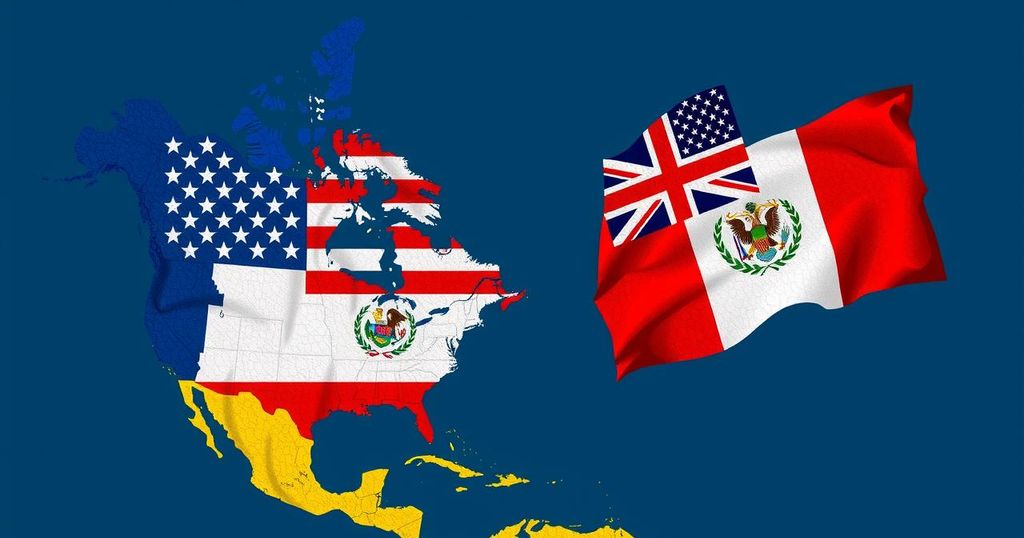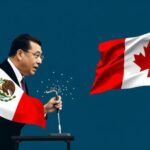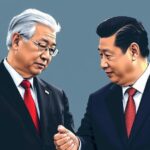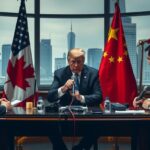Politics
AFP, ASIA, ASIA SOCIETY POLICY INSTITUTE, BIDEN ADMINISTRATION, CANADA, CHINA, DONALD TRUMP, EUROPE, FOREIGN POLICY, GEOPOLITICS, MEXICO, NATIONAL SECURITY, NORTH AMERICA, PHILIPPINES, TRUMP, UNITED STATES, US, US-CHINA RELATIONS, USMC, WENDY CUTLER, WHITE HOUSE, WORLD TRADE ORGANIZATION, WTO
Clara Montgomery
Trump Announces Major Tariffs on Mexico, Canada, and China
President-elect Donald Trump plans to impose substantial tariffs on imports from Mexico, Canada, and China, citing national security concerns related to drug trafficking and immigration. He intends to implement a 25 percent tariff on goods from Mexico and Canada, and a 10 percent tariff on Chinese imports, reflecting a continuation of his aggressive trade agenda aimed at renegotiating international agreements and protecting U.S. economic interests.
President-elect Donald Trump has declared his intention to implement significant tariffs on imports from Mexico, Canada, and China, citing concerns related to the illegal drug trade and immigration issues. Utilizing his Truth Social account, Trump stated that on January 20th, he would sign executive orders to impose a 25 percent tariff on all goods from Mexico and Canada, coupled with a 10 percent tariff on Chinese products. This trade agenda aligns with Trump’s broader economic strategy established during his campaign, in which he pledged to introduce duties on both allies and adversaries alike.
During his previous term, Trump’s aggressive trade policies primarily targeted China, implementing tariffs on a wide range of imports which triggered retaliatory actions from China that notably impacted American farmers. The dynamics of trade relations between the United States, Mexico, and Canada currently operate under the US-Mexico-Canada Agreement (USMCA), a deal renegotiated during Trump’s presidency aimed at benefiting American industries, particularly automotive manufacturing. Despite the complexities of these international trade deals, Trump’s references to the fentanyl crisis and immigration signify an attempt to invoke national security as justification for imposing tariffs, a strategy permitted under World Trade Organization regulations, albeit with cautions against frequent use.
Concerns surrounding the economic impact of such tariffs remain prevalent, as experts argue that increased tariffs may elevate inflation and inhibit economic growth. While these tariffs are perceived as a strategic tool to negotiate favorable terms and encourage domestic manufacturing, individuals close to Trump assert that initiating tariffs serves as leverage in trade negotiations. Furthermore, Trump’s selection of Howard Lutnick, known for his hardline stance on China, as commerce secretary suggests a continued focus on high tariff levels directed at foreign goods. Similar sentiments have been echoed by trade analysts anticipating negotiations will primarily focus on China, with potential tariff implementation being viewed as politically expedient while Canada and Mexico prepare for their trade deal reassessment in 2026.
The proposed tariffs by President-elect Trump reflect a continuation of trade policies that characterized his previous administration, where he employed protective measures against China, Canada, and Mexico, among others. The recent statements draw attention to ongoing issues with drug trafficking, particularly involving fentanyl from China and immigration from Mexico and Canada, framing these economic decisions within a narrative of national security. The economic implications of such tariffs often result in increased prices for consumers as they are passed down from importers, while their effectiveness in altering trade behaviors remains widely debated among economists. In essence, Trump’s tariff strategy serves as a tool for renegotiation while potentially straining international relationships under established trade agreements like the USMCA.
In summary, President-elect Trump’s announcement of substantial tariffs on goods from Mexico, Canada, and China is poised to reshape trade relations significantly while addressing national security concerns. This move is consistent with his past strategies aimed at protecting American economic interests and revitalizing manufacturing jobs domestically. Amidst warnings from economists about the potential negative impact on inflation and economic growth, the administration’s focus on tariffs underscores a protective trading stance as the U.S. navigates complex international partnerships.
Original Source: www.northwestsignal.net








Post Comment